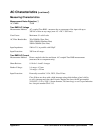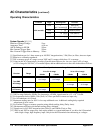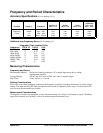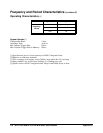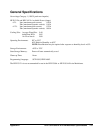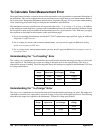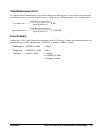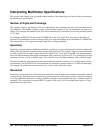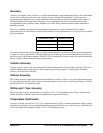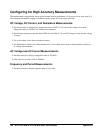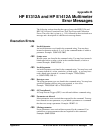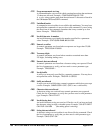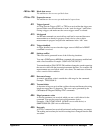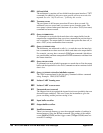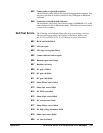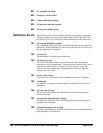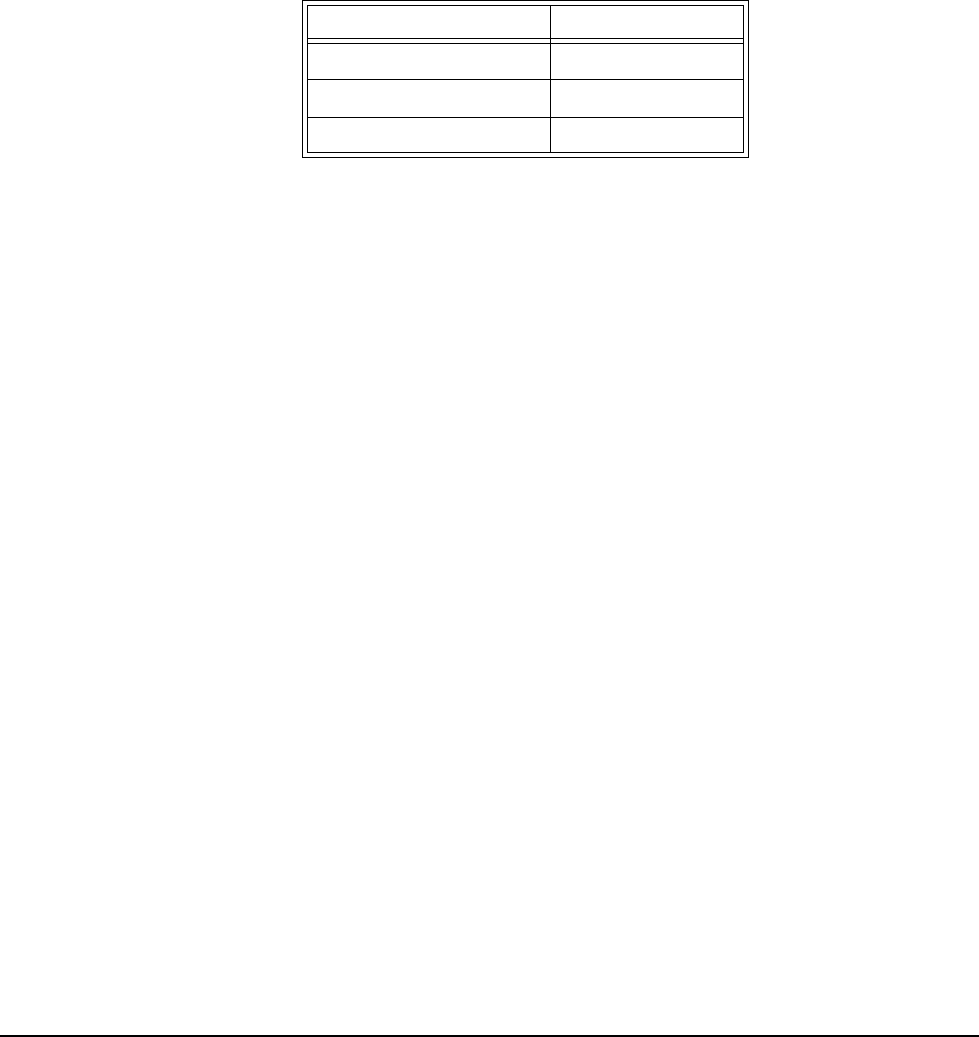
HP E1312A and HP E1412A Multimeter Specifications 183Appendix A
Accuracy
Accuracy is a measure of the “exactness” to which the multimeter's measurement uncertainty can be determined
relative to the calibration reference used. Absolute accuracy includes the multimeter's relative accuracy
specification plus the known error of the calibration reference relative to national standards (such as the U.S.
National Institute of Standards and Technology). To be meaningful, the accuracy specifications must be
accompanied with the conditions under which they are valid. These conditions should include temperature,
humidity, and time.
There is no standard convention among multimeter manufacturers for the confidence limits at which
specifications are set. The table below shows the probability of non-conformance for each specification with the
given assumptions.
Variations in performance from reading to reading, and instrument to instrument, decrease for increasing number
of sigma for a given specification. This means that you can achieve greater actual measurement precision for a
specific accuracy specification number. The HP E1412A is designed and tested to meet performance better than
mean
±
4 sigma of the published accuracy specifications.
Transfer Accuracy
Transfer accuracy refers to the error introduced by the multimeter due to noise and short-term drift. This error
becomes apparent when comparing two nearly-equal signals for the purpose of “transferring” the known
accuracy of one device to the other.
24-Hour Accuracy
The 24-hour accuracy specification indicates the multimeter's relative accuracy over its full measurement range
for short time intervals and within a stable environment. Short-term accuracy is usually specified for a 24-hour
period and for a
±
1°C temperature range.
90-Day and 1-Year Accuracy
These long-term accuracy specifications are valid for a 23°C ± 5°C temperature range. These specifications
include the initial calibration errors plus the multimeter's long-term drift errors.
Temperature Coefficients
Accuracy is usually specified for a 23°C ± 5°C temperature range. This is a common temperature range for many
operating environments. You must add additional temperature coefficient errors to the accuracy specification if
you are operating the multimeter outside a 23°C ± 5°C temperature range.
Specification Criteria Probability of Failure
Mean ±2 sigma 4.5%
Mean ±3 sigma 0.3%
Mean ±4 sigma 0.006%



